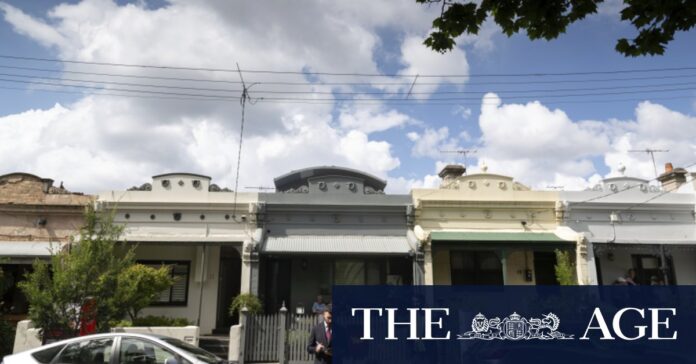[ad_1]
Aird expects a mild variation in growth across the cities, tipping Brisbane for the strongest at 6 per cent, due to its comparatively more affordable prices, slightly tighter labour market, and the tailwinds that come with being the host city for the 2032 Olympics.
He forecasts prices to rise 5 per cent in Melbourne and Perth, 4 per cent in Sydney and 1 per cent in Adelaide.
ANZ senior economist Adelaide Timbrell predicts prices to rise an average of 6 per cent across the capitals, and as much as 10 per cent in Brisbane. It’s followed by Perth (7 to 8 per cent) and Sydney (6 to 7 per cent), while more subdued gains are forecast for Melbourne (3 to 4 per cent).
What are the big four banks forecasting for property prices in 2024?
- ANZ forecasts capital city property prices to lift 6 per cent. The biggest gain is tipped for Brisbane, 9 to 10 per cent, followed by Perth, 7-8 per cent. and Sydney, 6-7 per cent. Melbourne prices are predicted to lift 3 to 4 per cent.
- CBA expects capital city prices to lift 5 per cent, with small variations across the cities. Brisbane is tipped for 6 per cent growth, Melbourne and Perth for 5 per cent, Sydney for 4 per cent and Adelaide for 1 per cent.
- NAB predicts prices across the capitals to rise an average of 5.4 per cent. Prices are expected to lift 6.5 per cent in Brisbane, 6.2 per cent in Perth and Adelaide, 5.5 per cent in Melbourne and 5 per cent in Sydney. Hobart values are expected to end the year flat.
- Westpac forecasts 6 per cent growth across the combined capitals. Perth is penciled in for the highest growth at 10 per cent, followed by Brisbane at 8 per cent, Sydney at 6, Adelaide at 4 and Melbourne at 3.
“Post-COVID Brisbane and Perth have seen a huge amount of population growth, and their economies ran a little stronger in the pandemic … it’s created a sharper housing supply issue,” she said.
“The mismatch between building approvals [over the past year] and expected population growth is at its strongest for Brisbane and Perth.”
While Sydney and Melbourne were more limited by affordability constraints, and were losing people to interstate migration, they took the bulk of new arrivals from overseas, which creates extra demand for housing and would continue to push up prices, Timbrell said.

Buyer spending power has been constrained by higher interest rates, but not all home hunters have been affected. Credit: Dion Georgopoulos
Growth was also being fuelled by buyers whose spending power was less affected by rising rates, such as those who were borrowing well below their maximum capacity.
“There are a lot of people whose borrowing capacity is not impacted, and they’re competing harder … and more people are competing for lower priced properties, which is pushing up prices for that market segment,” she said.
Timbrell added wage growth nationally should outpace inflation in 2024, making it somewhat easier for households to save. This, and an expected peak in the cash rate – which she expected to hold until a rate cut in December – would contribute to further price growth.
Loading
However, price declines could still be on the cards as the cash rate continues to bite household budgets and reduce borrowing power, said AMP chief economist Dr Shane Oliver.
“Our expectations is that prices will probably fall 5 per cent [across the capital cities] through 2024. Sydney, Melbourne, Canberra and Hobart are probably going to be the weakest,” Oliver said.
“Meanwhile Adelaide, Brisbane and Perth could get by with stable to upwards price growth … they’ve got lower debt levels… and are also benefiting from interstate migration, particularly Brisbane and Perth.”
Price growth in 2023 has been supported by strong immigration, lower listing levels and a broader housing shortage, Oliver said. As well as demand from cashed-up buyers less affected by rate hikes – such as those with sizeable equity or help from the bank of mum and dad. A buyer pool which he suspected had been exhausted.
“It looks like we’re now starting to move through the peak in immigration … and while there will still be shortfall in housing, I think we’re banging up against affordability constraints both in terms of rents and prices [which prompts households to consolidate and helps ease demand],” he said.
“The combination of constrained buyers and some further pick up in supply [as more distressed listings occur], will pull prices down.”
Oliver believed the cash rate had peaked, and would fall in the second half of the year. However, he thought any rebound in prices off the back of this would be slower, given how high prices had already climbed and expectations for a broader economic slowdown.
[ad_2]
Source link


